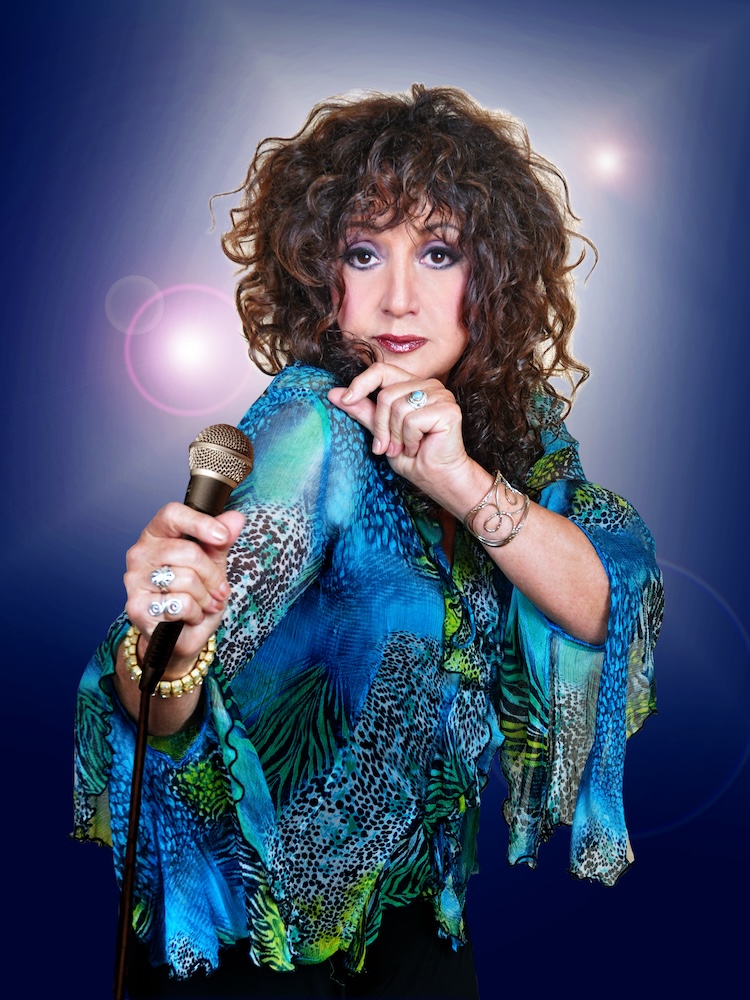Maria’s Musical Meanderings Through the Eras

Maria Muldaur’s career has been a 60-year exploration of the music she grew up with as a Greenwich Village native who came of age in the early 1960s, the era of what John Sebastian calls the “folk scare,” when acoustic music of all kinds exploded in the downtown New York scene.
“It was an incredibly exciting time, and being there totally shaped me,” Muldaur said. “People in the urban north were just starting to discover all sorts of American roots music – Appalachian, bluegrass, early blues, gospel music, jug band music. We were enthralled to hear this very soulful, authentic music after the fifties where the music on the radio had become very bland and insipid. All these wonderful and unique pioneers of American music were coming up and playing coffeehouses and festivals, and I was right there in the thick of it.”
Muldaur (then Maria D’Amato) learned how to play Appalachian fiddle from Doc Watson and formed a bluegrass group with David Grisman called Maria and the Washington Square Ramblers, hobnobbed with Sebastian and Bob Dylan among others of the era. She joined Jim Kweskin & the Jug Band as a featured vocalist, and soon married member Geoff Muldaur, and the couple produced two post-band albums together before the marriage dissolved.
That’s when Muldaur launched her solo career with a self-titled album that drew on all of her influences, veering from a New Orleans blues song “Don’t You Feel My Leg,” to Dolly Parton’s “Tennessee Mountain Home,” Dr. John’s “Three Dollar Bill,” country legend Jimmie Rodgers’ “Any Old Time,” cowboy folk-swing cult hero Dan Hicks’ “Walkin’ One and Only,” Kate McGarrigle’s “The Work Song” and two tracks by singer-songwriter Wendy Waldman. Grisman, Dr. John, Clarence White, Ry Cooder, David Lindley, Bettye LaVette, and Freebo are among the three dozen musicians who appeared on the album.
“It was very eclectic, just based on music I loved and songs that move me, whatever style they were,” she said. “Someone later told me that I single handedly invented Americana music but I was doing it decades before anybody gave it a name.” (Years later, the Americana Music Association gave her a lifetime achievement award for her body of work, some 43 albums strong.)
But the song that caught fire was a throw-in, “Midnight at the Oasis,” by her rhythm guitarist David Nichtern, added when the producer said the record needed another mid-tempo song.
“He ripped out his guitar and we did it for the producer, who thought it was cute but wasn’t crazy about it,” Muldaur recalled. “But I wanted to use it as a thank you to David, because he had been very supportive while I was in way over my head doing this first solo project.”
Graced by Amos Garrett’s sensuous slide guitar solo over the song’s ahead-of-its-time chord progression and lyrics about seducing a sheik at a desert rest stop, “Midnight at the Oasis” made it to No. 6 on Billboard’s single chart, was nominated for both Record of the Year and Song of the Year at the Grammys in 1974, and has remained a classic rock staple ever since.
It’s also been responsible for bringing a bunch of babies into the world.
“For years, people would show me pictures of their children they’d conceived while listening to ‘Midnight at the Oasis,’” Muldaur said. “I’d just say, well, gee, I’m glad to have been of service.”
In the decades since, Muldaur has dabbled in jazz, found a home in New Orleans swamp blues, and otherwise continued to offer an eclectic mix of music drawn from writers famous and obscure.
“I don’t compose my own songs, but I guess I do have a knack for choosing them, which has served me well for 50 years,” she said.
Now, at 81, Muldaur, who hasn’t stopped performing or recording, is coming to SOhO on October 21 as part of her multimedia retrospective show Way Past Midnight, which highlights her debut solo album in a chronicle of her decades journeying through American roots music.
“Fifty years is a major milestone and it is way past ‘Midnight,’ and I’ve done so much since, so I’m telling the story in the show, with photos and a few videos to illustrate the narrative,” she said. “I stop along the way to do some of the signature songs with my Red Hot Bluesiana band. There are some great stories like when I got to sing a duet with Hoagy Carmichael in the studio, of having Linda Ronstadt warbling away in harmony on a new recording of “Tennessee Mountain Home.” It’s nothing formal, just having people come check out my musical scrapbook and help me go down memory lane, enjoy these songs that my fans have cherished for 50 years.”
Visit www.sohosb.com for more information and tickets.







You must be logged in to post a comment.